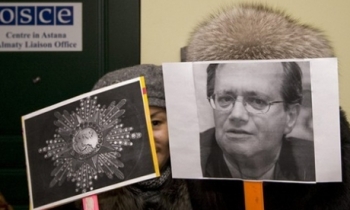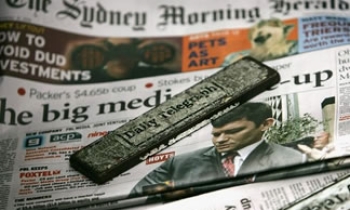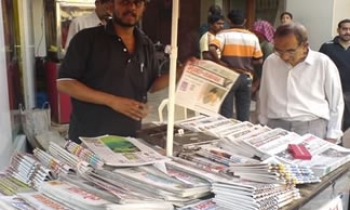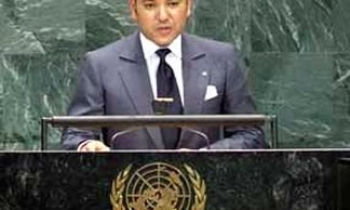Smaller-sized newspapers are the future, but publishers should take time to optimise their strategy before rushing to change format.
This is the advice of Jim Chisholm, Strategy Advisor to the World Association of Newspapers, speaking in Washington at a recent Newspaper Association of America "Free vs. Paid/Tabloid vs. Broadsheet" conference.
"Yes smaller formats are a good idea. Readers have been asking broadsheet publishers to change format for decades," said Chisholm, who directs the Shaping the Future of the Newspaper project for WAN. "But it is important to take time to consider the range of strategic options and operational issues that publishers must face when making such a move."
Chisholm's presentation follows a period of two years during which over 60 daily newspapers world-wide have moved to a smaller size. Many more are planning or working on the changes.
The acceleration in reformatting has been encouraged by the success of the London Independent, which has increased sales by 20 percent since its relaunch two years ago.
"Few newspapers were ever going to see significant or sustainable circulation gains from the move to smaller format. Many are now finding the issues relating to advertising are more complex than they expected. Tabloid production results in a lost of sectioning, and the smaller page presents a range of complexities regarding advertising layout, not least of which is an 11 percent loss of sellable space on the page," said Chisholm.
The optimum solution is for publishers to consider moving to a Berliner format, coinciding the change with the introduction of new print technologies, Chisholm believes.
Berliner format is approximately midway between broadsheet and tabloid in size, but has the advantage of being produced in the same print specification as a broadsheet. This means that the paper can be sectioned. Halving the page size equivalent to producing the tabloid from the broadsheet results in a product that is approximately A4 in size. Two current examples of such a move are The UK Guardian¹s change, and that announced change by Gannett¹s Lafayette Courier in the US. Both companies have acquired new presses from MAN Roland.
"Berliner has been very popular in many European markets, but publishers have been too keen to move down in size, rather than to the optimum size," said Chisholm. "Berliner also presents the option of creating A4 publications, which are also becoming increasingly popular, and I believe will be the next big trend in newspaper design."
WAN is studying the format change phenomenon as part of its Shaping the Future of the Newspaper project, which identifies, analyses and publicises all important breakthroughs and opportunities that can benefit newspapers all over the world.
The latest study, which builds on "The Format Change Phenomenon", a recently published strategy report from the SFN project, examines the drivers, highlights the opportunities and determines the risk of format change. It will be presented for the first time at the World Editor and Marketeer Conference & Expo, to be held in Athens, Greece, in November (more information at http://www.wan-press.org/athens2005 ).
WAN is a leading provider of industry research and analysis through its Shaping the Future of the Newspaper project, which provides WAN members and subscribers with Strategy Reports on these developments, a library of case studies and business ideas, and a wealth of other vital information for all those who need to follow press industry trends. Consult http://www.futureofthenewspaper.com for more on the project.
WAN conducts the SFN project with support from five international partners -- PubliGroupe, the Swiss-based international advertising and promotion group; MAN Roland, a leading company for newspaper production systems; UPM-Kymmene, one of the world's leading printing paper producers; Telenor, the leading Norwegian telecommunications, IT and media group; and Samsung Electronics, a global leader in semiconductor, telecommunication, and digital convergence technology.
Inquiries to: Larry Kilman, Director of Communications, WAN, 7 rue Geoffroy St Hilaire, 75005 Paris France. Tel: +33 1 47 42 85 00. Fax: +33 1 47 42 49 48. Mobile: +33 6 10 28 97 36. E-mail: lkilman@wan.asso.fr
or
Jim Chisholm, Tel: +44 77 7581 7797, E-mail: jim.chisholm@futureofthenewspaper.com









